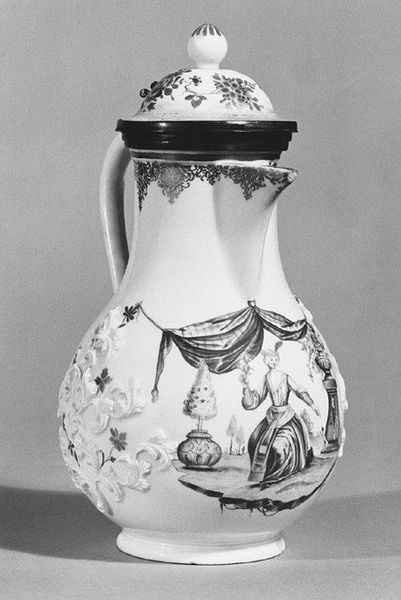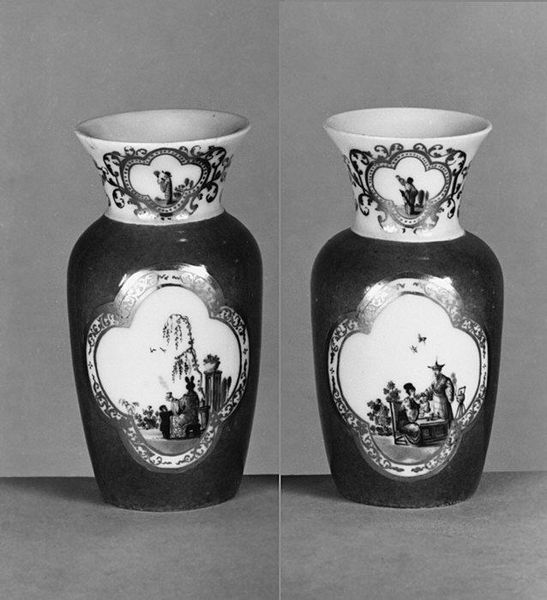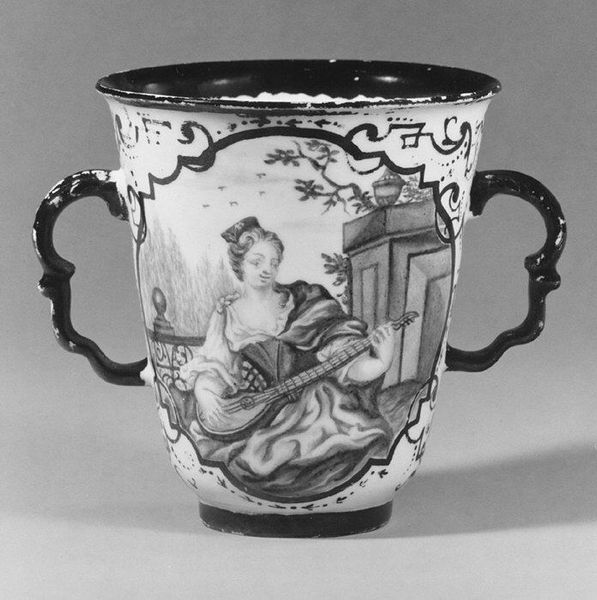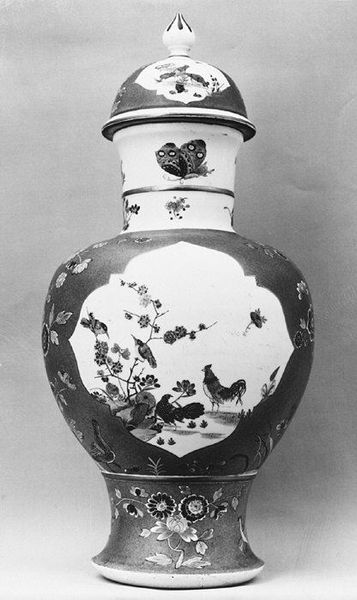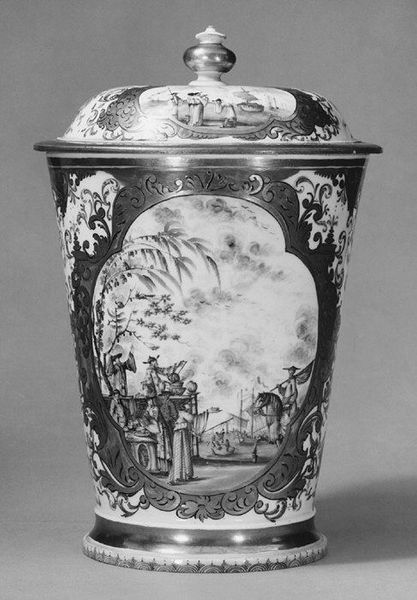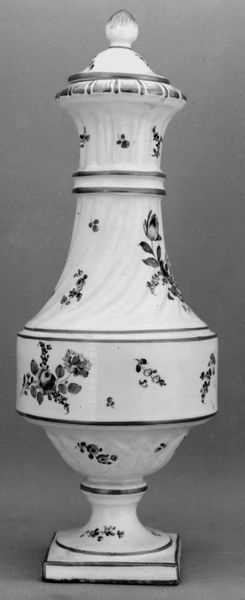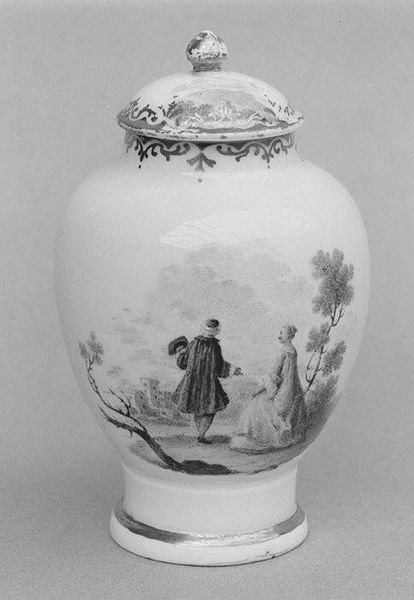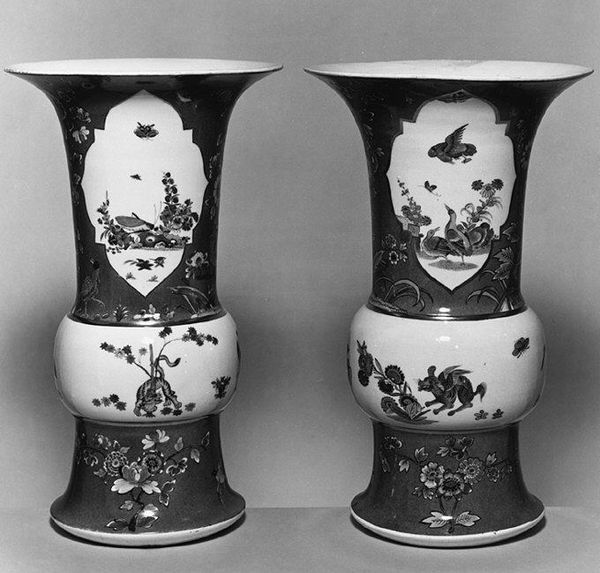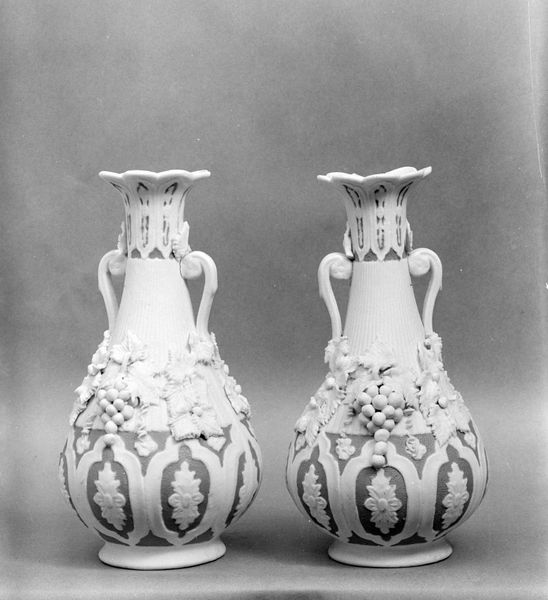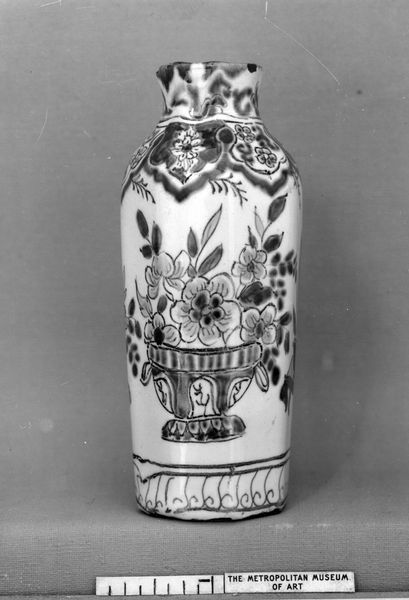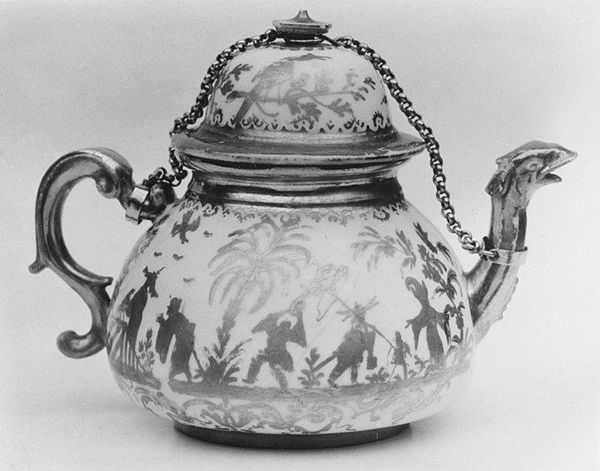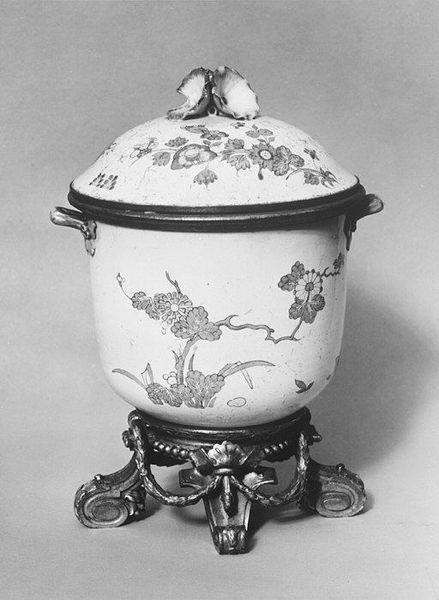
ceramic, porcelain, sculpture
#
portrait
#
ceramic
#
porcelain
#
sculpture
#
ceramic
#
decorative-art
#
rococo
Dimensions: Height: 4 in. (10.2 cm)
Copyright: Public Domain
Editor: So, this is a porcelain tea caddy from the Meissen Manufactory, made sometime between 1720 and 1745. The portrait amidst the abstract decoration makes me wonder, who was considered important enough to be immortalized on a tea caddy? What stories do you see embedded in its form and decoration? Curator: I see echoes of cultural values intricately woven into the ceramic itself. The portrait, likely of nobility or a patron of the arts, becomes a symbolic representation of status and taste. It shows a connection between wealth, portraiture, and ritual. Editor: Ritual? Curator: Tea drinking, especially in the 18th century, was a ritual deeply tied to social status and refinement. The caddy is not merely functional. It is a container of meaning, linking the consumer to aspirations of class and elegance. The abstract designs, what do they bring to mind for you? Editor: They feel a bit like a family crest, something geometric that suggests power or a distinct lineage, like some kind of identifier? Curator: Precisely! These visual cues acted as constant reminders of one’s place within society. In essence, the tea caddy functions as a microcosm of societal values. A status symbol that perpetuates power and influence. Don't you think it fascinating that objects we might consider everyday once served such complex functions? Editor: It’s wild! Seeing it this way totally changes how I view decorative arts. I won’t look at a teacup the same way again. Curator: Hopefully, you realize even 'minor' art provides rich clues and reveals enduring desires for connection and meaning.
Comments
No comments
Be the first to comment and join the conversation on the ultimate creative platform.
